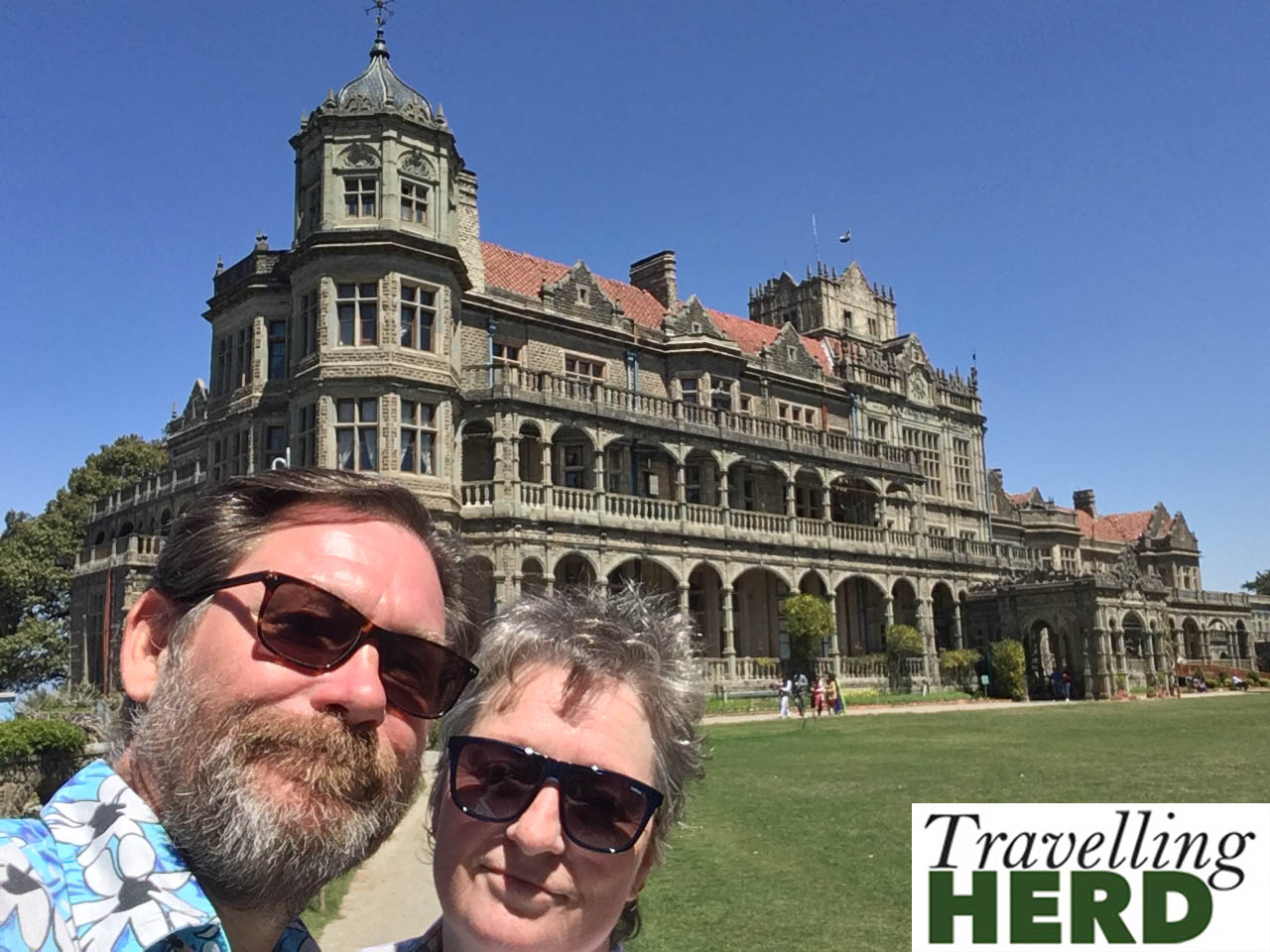Sunday 31st March 2019
It is easy to forget that, following Viceroy of India John Lawrence’s decision to move the capital of the British Raj from New Delhi to the hill station of Shimla in 1863, for six months of the year this was the headquarters of the government of India.
In our guide book, the address of the Viceregal Lodge is given as The Mall and although this road spans four miles, as this has been a more sedentary holiday than we usually have we thought we would try walking. A more accurate address, which is given elsewhere, would be near Observatory Hill.
There are no tuk-tuks or cows on the streets of Shimla and the traffic is therefore calmer than in other towns and cities. There are many hairpin bends on the roads to cope with the steep gradients but there are plenty of traffic police wearing curious shiny white hats shaped like those worn by Canadian Mounties, to direct and control the flow of vehicles.
Our route took us back past the Post Office [below right] and the Railway Board Building [below left], which was built between 1896 and 1897 using cast iron and steel to ensire it was structurally fire resistant. The Victorians certainly built for posterity and a sign outside the building says that no original features were lost in the restoration after a fire struck the top floor in February 2001.
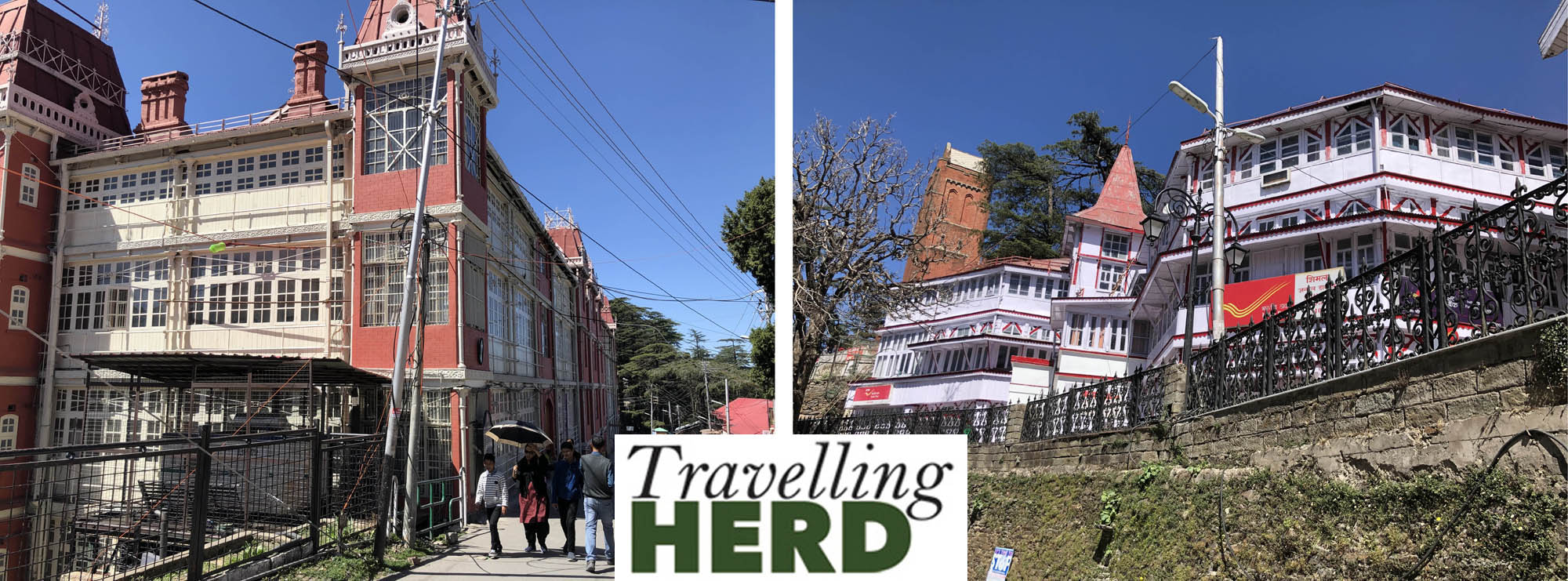
When first the restricted vehicle zone and then the pavement ran out we carried on along steep winding roads to come up through the back entrance and the gardens. We would not necessarily recommend this walk as we discovered when we reached our destination that many other tourists were arriving by taxi from a different direction.
The former Viceregal Lodge, which has been called Rashtrapati Niwas since it was handed over to the president, is anything but a lodge house. Built between 1880 and 1888 under the direction of the then Viceregal, Lord Dufferin, and designed by Henry Irwin in a Scottish Baronial style using the local grey stone, it would look perfectly at home in Scotland.

Incorporating much of the most up to date technology of its time, there are two large tanks under the lawns to capture and conserve the rainwater from the roof. We were told that this was the reason that no-one is allowed to walk on the grass. But it would seem to be a fairly flimsy Victorian construction if a few people strolling over the top of the tanks represented a threat. We felt it more likely that this was simply to help to keep the grass green.
The Viceregal Lodge was the first building in northern India to have electricity installed and still uses the original wiring. There are also water tanks on the roof which serve an early sprinkler system in case of fire, triggered by excessive heat, which thankfully, to this day, has never been activated.
The building has borne witness to some historic events including the Simla Conference meetings in 1945 when the Viceroy and the major political Indian leaders met to discuss Indian self-government. They failed to come to an agreement on a united India and this led to the next historically significant meeting held in the Viceregal Lodge, the 1947 partition discussions which ultimately created India and Pakistan. After India was granted independence in 1947 the Lodge became the summer residence of successive Indian presidents before being given over to the Indian Institute of Advanced Study [IIAS].
You cannot take photographs inside the Vieceregal Lodge and the majority of the building is now used by IIAS. Two rows of balconies overlook the impressive teak panelled main entrance hall which rises three storeys to the roof. At one end the original ballroom, complete with antique Belgian chandeliers, now serves as what must surely be one of the most elegant and glamorous student libraries in the world.
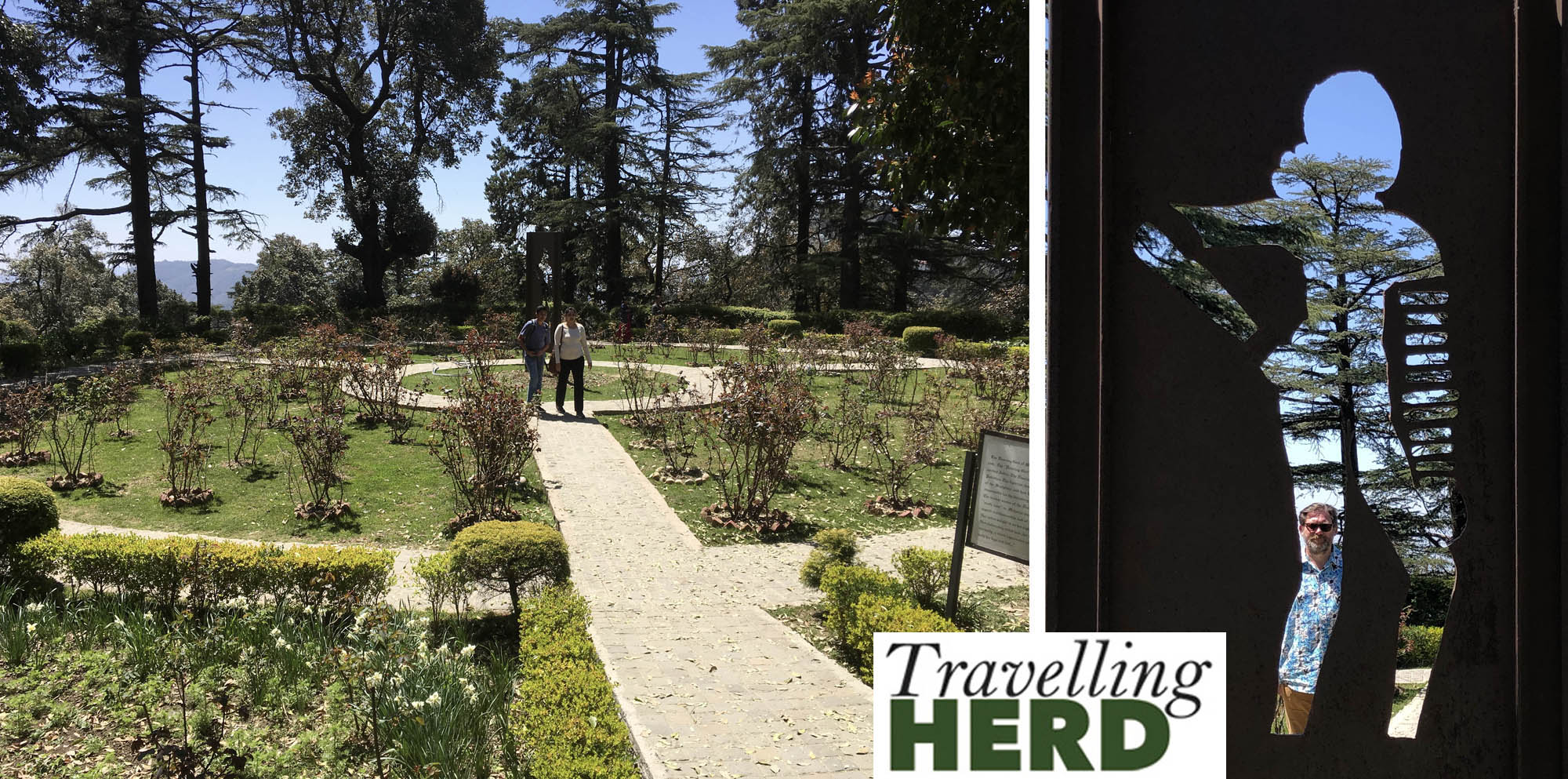
There are formal gardens which include a rose garden – not in bloom during our visit – and a sculpture [above, right] “The Presence of the Absence” mounted on two pieces of railway track.
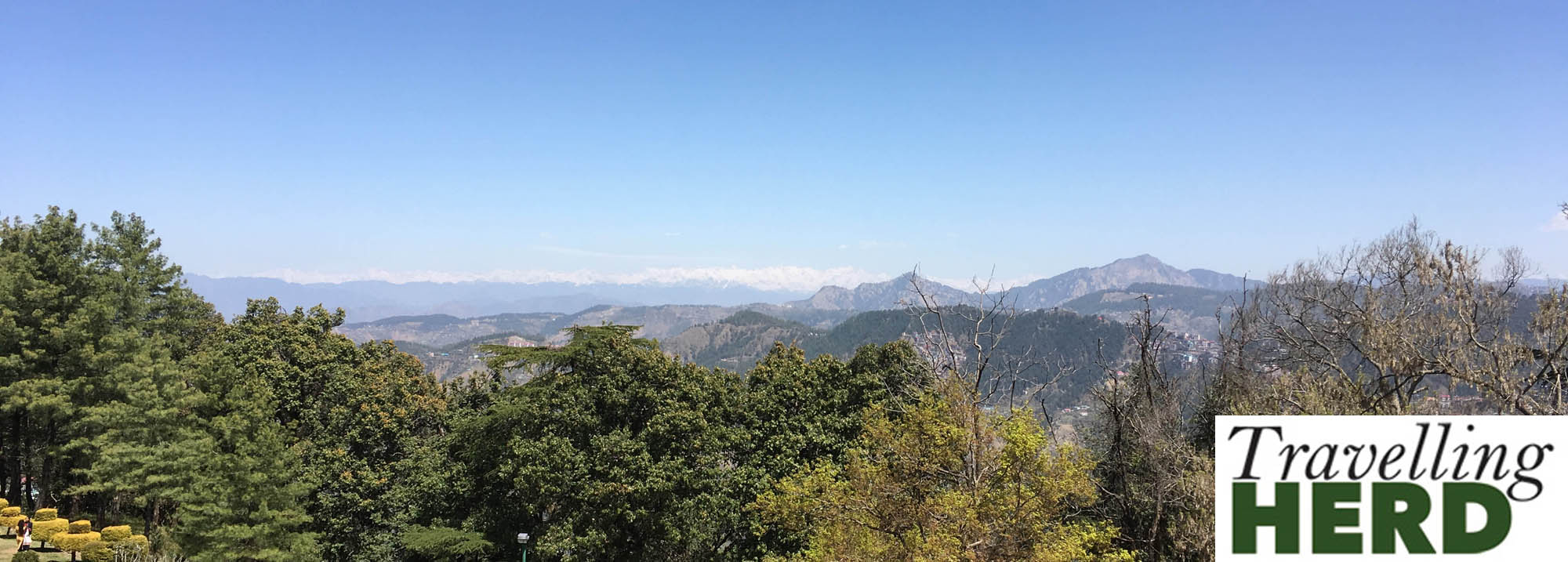
The views are, as is usual in and around Shimla, spectacular with the snow capped Himalayas in the distance though photographs do not do them justice.

On our walk and tour of the Lodge and gardens we covered 4.3 miles including the equivalent of climbing 25 flights of stairs.

If we had walked back into Shimla instead of getting a taxi to the hotel to see the sunset again, this would have more than doubled the flights climbed.
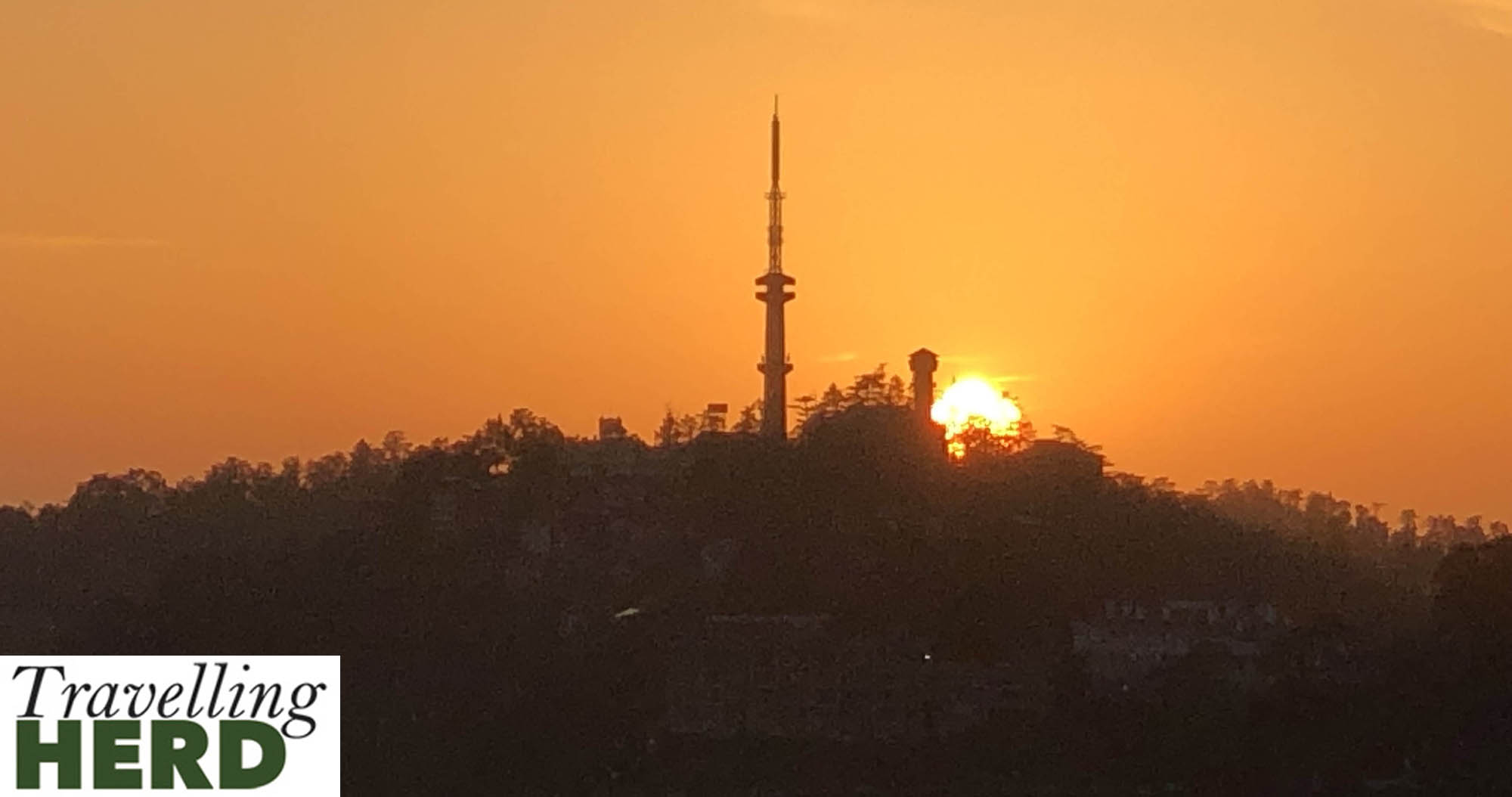
Video of the day:
Current Route Map:

Distance travelled so far:
By Air to Delhi: 4,187miles
By 15 trains to Shimla: 4,155miles
Selfie of the day:
